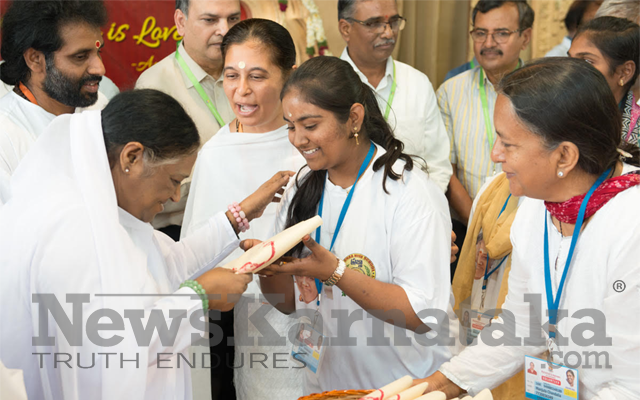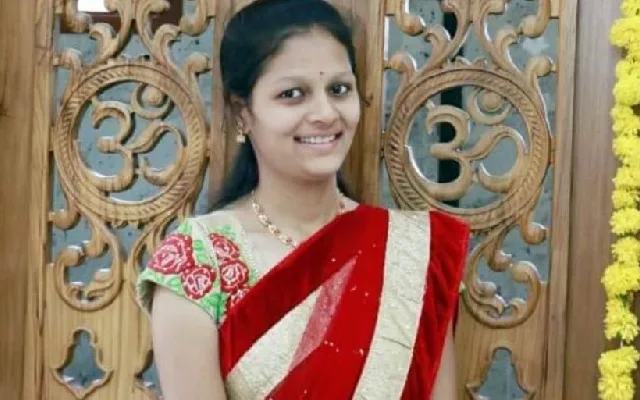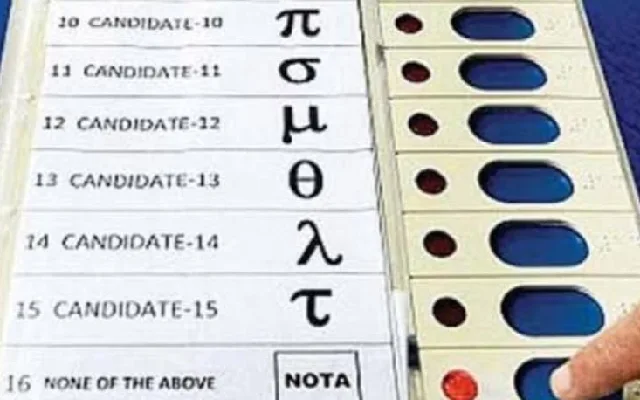
Several innovators, consumers and producers in India have sought to strike a balance between sustainability and feasibility for long. But the Amrita SeRVe (Self Reliant Village) Programme of Mata Amritanandamayi Math, a non-profit institution with consultative status to the UN, has achieved this balance with its simple yet cutting edge product – Saukhyam Reusable Pads.
The programme’s co-director, Anju Bist, known famously as the “Pad Woman” of India for enthusiastically promoting pads made of cloth and banana fibre, is the co-creator of Saukhyam Reusable Pads. This product garnered appreciation from the UN Climate Change Conference. It also rightly earned the award of “Most Innovative Product” from the National Institute of Rural Development, Hyderabad. This product which is manufactured by self-help groups of women in villages has secured its rightful place in the emerging no-waste economy. The profits of this product go to the same villages that manufacture them. These villages have been adopted by the Math as part of their Amrita SeRVe project.
“There are 355 million menstruating women and girls in India, as per the National Family Health Survey data. Many from low-income communities still do not have access to hygienic products to manage their menstruation. There are efforts by many organisations to make low-cost disposable pads available to such women. But if every woman and girl of menstruating age in India were to use disposable pads, 38,500,000,000 used pads would be discarded every month. How does one get rid of soiled pads? Burning them releases harmful dioxins and furans. Burying them is no good either because the pads are non-biodegradable. Each pad contains plastic and would take 500 to 800 years to decompose. None of us wants to leave this trash as our legacy”, said Anju Bist.

Saukhyam Reusable Pads are a first-of-its-kind in the world as they are made from banana fiber, which is a naturally occurring absorbent material. It absorbs six times its weight in fluid. Disposable pads, on the other hand, uses cellulose fibre which is derived by cutting down billions of trees every year worldwide, unlike banana fibre which is obtained from agro-waste. Additionally, the cellulose fibre used in India to make disposable pads is imported whereas banana fibre is locally sourced and is affordable. Five Saukhyam pads (which last up to 3 years) cost Rs. 330 whereas an average menstruator in India spends upto Rs. 100 every single month on pads. For reasons pertaining to affordability, environmental protection and menstrual hygiene, around 2 lakh women in India and other countries have shifted to Saukhyam pads. This has prevented significant amounts of carbon emissions and harmful waste.
The sale and distribution of Saukhyam Reusable Pads has brought India closer to the achievement of three Sustainable Development Goals. Firstly, contributing to SDG #13 Climate Action, Saukhyam is annually preventing the emission of 40.6 tons (approx.) of CO2 equivalent. Secondly, this product is created by rural women in Kerala, Bihar, UP and several other states. Such local manufacturing contributes to SDG #11, Sustainable Cities and Communities. Finally, Saukhyam is contributing to SDG #3, Good Health and Well-being by tackling menstrual health problems through its sustainable and affordable pads.



















